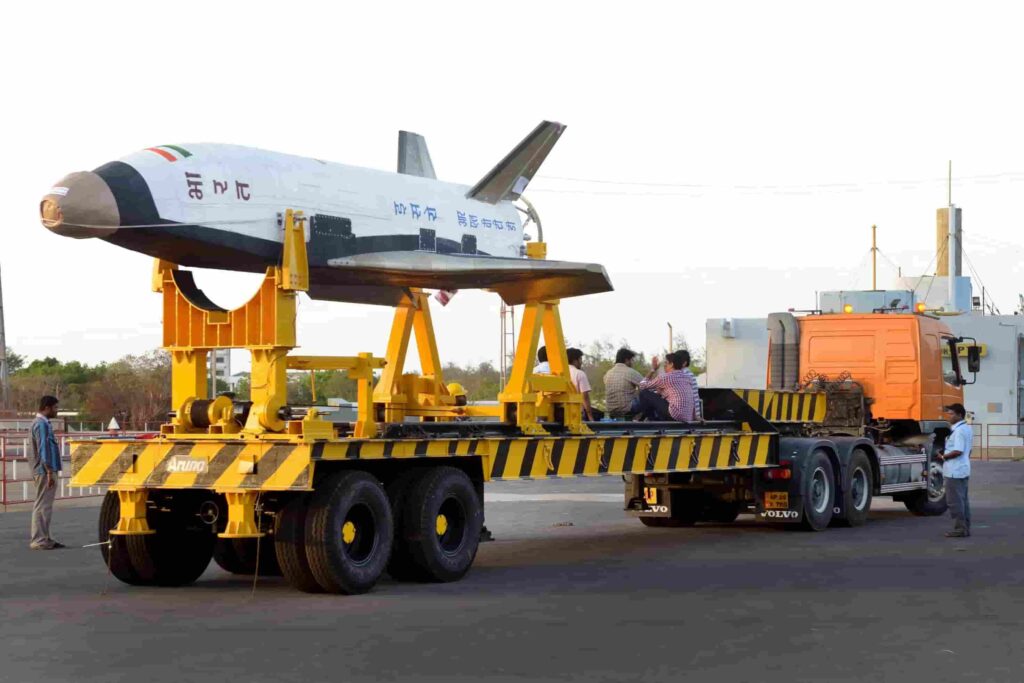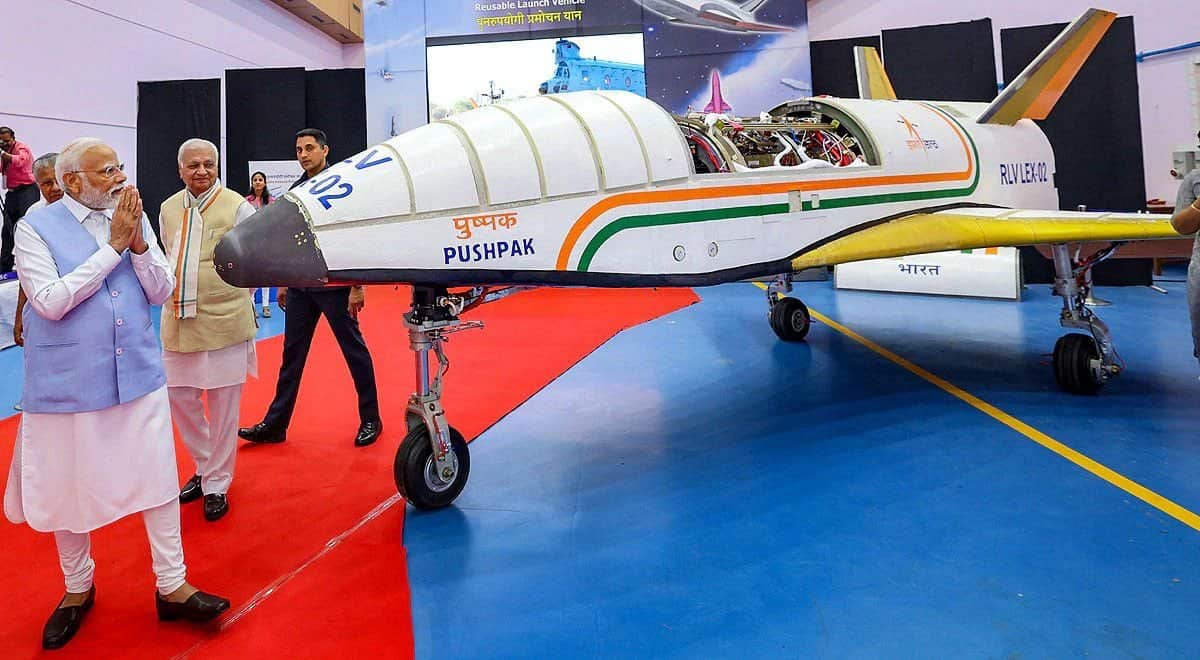ISRO’s Pushak launch vehicle is reusable, ISRO has been developing it since 2012 under the code name RLV (Reusable Launch Vehicle) now renamed as “Pushpak”, It is still in the development phase and is expected to take off maiden flight around 2026.
It is a fully reusable, and single-stage-to-orbit (SSTO) rocket, which means it will launch vertically with the help of boosters, and boosters will separate from Pushpak after exhaust, Pushak will fly autonomously and deploy satellites in designated orbit, and return to earth and land horizontally on an airstrip like an airplane.
Its first experimental test called the “Hypersonic Flight Experiment (HEX)” was conducted in 2016, In this test it attained a maximum altitude of 65 Km and lasted for 770 sec.
Its 2nd experimental test was conducted on 2 April 2023 called Landing Experiment (RLV-LEX), in this test prototype was lifted with the help of an Indian Air Force Chinook helicopter to a height of 4.5 km and suddenly dropped by helicopter to perform an autonomous landing experiment.
Its third experimental test of Pushpak previously known as RLV-TD is expected in March 2024
Why India needs Pushpak

Indian old launch vehicles like PSLV and GSLV are based on old technologies, so satellite launch costs by these rockets are relatively high. This upcoming launch vehicle reduced this cost by around 80%.
The market share of India in the international satellite launch market is currently low with this new rocket this gap can be bridged significantly.
Space agencies from countries like Japan, China, and Russia already developing their fully reusable launch vehicles, For ISRO to attain competitiveness, the development of a fully reusable launch vehicle is essential.
Till now only SpaceX Falcon 9 rocket is a fully reusable rocket, SpaceX is the largest space company by number of satellite launching per annum.
Read also Chandrayaan 3:Contribution of private companies to the mission
Read also Indian Startup Developing Private Astronaut Training Facility for Space Tourism in Navi Mumbai


